We may be a little late with our HTC One X+ review, but we wanted to give you our take on the phone before the US launch of the HTC One. Most people currently on the market for a new HTC phones would probably do better to wait a week or so and pick up the HTC One, but the HTC One X+ is still a viable option. In the US, the HTC One X+ is available exclusively from AT&T and is currently priced at $199.99 with a two-year contract, but if you’re looking for a deal, we’d suggest buying the HTC One X+ through Amazon for as little at $79.99. We expect the handset’s price to drop by at least $100 once the HTC One hits AT&T store shelves on April 19th, but it’s nearly impossible to predict what AT&T will do.
But enough about the HTC One, we’re here to talk about the HTC One X+.
Hardware
The HTC One X+ may share most of its name with HTC One X, but the phone’s internal hardware is what really sets it apart. HTC has equipped the One X+ with a quad-core 1.7GHz Nvidia Tegra 3, 4.7-inch 720p Super LCD 2 display, 1GB of RAM, GPS, Bluetooth 4.0, NFC, Wi-Fi 802.11 a/b/g/n and a 2100 mAh battery. The phone’s main camera features an 8 megapixel imaging sensor, HTC’s proprietary HTC ImageChip, F2.0 aperture and 28mm lens and is capable of 1080p HD video recording. The front-facing camera put on a good show too with a 1.6 megapixel imaging sensor with full 720p video capture capabilities. Since quite a few people were not happy with the limited storage capacity of the original HTC One X, HTC upped the ante with the One X+, cramming in a full 64GB of storage. There’s still no microSD card slot anywhere to be found, but we doubt the average consumer has enough digital media sitting around to max out the storage of this phone.
When compared to most other high-end Android phone currently on the market, the HTC One X+, is still fairly respectable. The 1.7 GHz Nvidia Tegra 3 and 64GB of storage make the HTC One X+ a unique device which is tailored for media and mobile gaming junkies, but that doesn’t mean it the average consumer wouldn’t enjoy the phone.
Design
If you think the HTC One X+ looks familiar, that’s because it features the same flawless design as the HTC One X. Besides a few accent tweaks like the black HTC logo on the back, black metal ring around the camera lens and an unnoticeable bump in thickness, the HTC One X+ and original One X are virtually indistinguishable.
Like the HTC One X, the shell on the HTC One X+ is made of polycarbonate with a black soft-touch coating. On paper, the HTC One X+ is quite a large device, but it’s subtle curves and tapered edges make the phone feel as lot smaller and thinner than it actually is. The attention to detail is highlighted by the glass on the front of the HTC One X+ which curves around the edge of the device, blurring the lines between the front and sides of the phone.
As far as looks go, the only thing we’d really change is the hideous AT&T globe which sits right above the display. We know AT&T wants onlookers to know where they can buy HTC’s gorgeously crafted phone, but a subtle logo on the back of the device would have been less gaudy.
Display
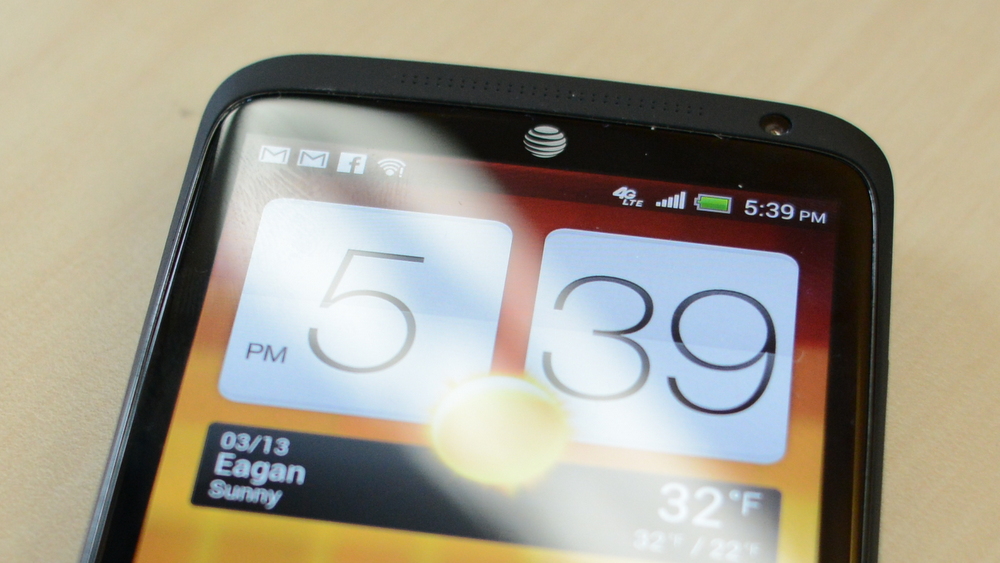
Let’s be honest, most consumers don’t really know much about display technology. The 720p and 1080p terms are thrown around a lot since HD TV’s have gone mainstream, but there are only a handful of people out there who could tell you the difference between 720p and 720i. While there are many who still debate over the merits of Super LCD versus Super AMOLED, the tech industry has mainly agreed that the display on the HTC One X+ is one of the best cellphone displays currently on the market.
The HTC One X+’s 720 x 1280 Super LCD2 display delivers an superb visual experience, making it virtually impossible to distinguish between pixels with the naked eye. Color tones are true to life with crisp whites and dark blacks. There are a handful of AMOLED displays on the market which can produce darker black than the HTC One X+’s display, but you are typically treated to whites with a bluish undertone. In our books, the display on the HTC One X+ is currently only outclassed by the 5-inch 1080p display on the HTC Droid DNA. But since the DNA is exclusive to Verizon and the HTC One X+ is exclusive to AT&T here in the US, consumers will never really have to option to choose between these two devices.
Cameras

Since last year’s introduction of the HTC One X, camera technology on HTC’s smartphones has been on the forefront of innovation. We were thoroughly impressed with the camera while reviewing the HTC Droid DNA, so we were pleasantly surprised when the HTC One X+ lived up to our high expectations. The camera software and hardware used on the HTC One X+ are nearly identical to the original One X. The phone features an 8 megapixel sensor, dedicated HTC ImageChip which are paired up with an f2.0 lens which allows the sensor to absorbed astonishing amount of light.
On the software side, the camera experience on the One X+ is enhanced by the new tweaks that HTC introduced with Sense 4+. Users can simultaneously capture video and still shots at the same time and the new tourist setting launches the camera automatically any time the power button is pressed – a feature we found extremely convenience while taking sample shots for this review.
Image and video quality on the HTC One X+ is comparable to what we’ve experienced with the HTC One X and HTC One S. The HTC One X+ takes some incredible shots and we can’t say enough about the phone’s ability of capturing stunning macro shots. The HTC Droid DNA does have a bit of an advantage since it features an 88-degree wide-angle front-facing camera, but that really shouldn’t matter to most consumers since the DNA is a Verizon exclusive device.
Software
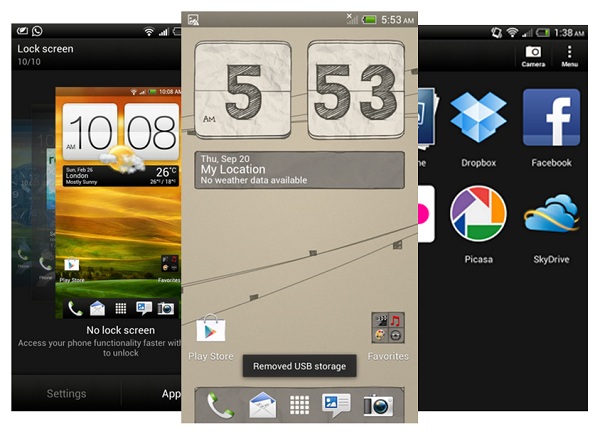
The HTC One X+ was the first device in HTC’s lineup to ship with Android 4.1 and HTC Sense 4+. Out of the box, users enjoy the benefits of Jelly Bean which include Project Butter, Google Now, offline voice typing and advanced notifications. HTC Sense 4+ enhancements include new skins for the UI, infinitely looping home screens, theming/tweaking options for the SMS app, automatic SMS forwarding to email options, password protected SMS inbox, updated gallery app with social services integration and improvements to HTC’s on-screen keyboard.
The software is intuitive to use and the UI tweaks remove a lot of the gradients, making things look a lot flatter than what most of us are used to with Sense. HTC Sense is still heavier than stock Android, but the HTC One X+’s faster processor is more than capable of delivering a smooth experience for its users. Sense offers users dozen on beautifully designed widgets to display on the home screen, interactive weather animations and a great application for taking notes with full Evernote integration. Like every custom UI, Sesne 4+ takes a little to get used to if you’re coming from stock Android, but we find that HTC’s software is much more enjoyable than some of the other skins currently being pushed by phone manufacturers.
Performance
If you’re in the market for one of the best Android-powered gaming phone, the HTC One X+ should be sitting at the top of your list. Simply put, the HTC One X+ is a beast!
The incredible performance of the HTC One X+ is instantly noticeable when you turn on the device for the first time. The isn’t the slightest hint of lag in the UI and applications launch even faster than they do on the Droid DNA. Many will point out that the benchmark scores of the HTC One X+ pale in comparison to newer devices with Qualcomm Snapdragon 600 processor, but Nvidia has gone the extra mile by working with developers to make sure that there’s an extensive library of games which have been optimized to run on Tegra 3.
| Benchmark Test | HTC One X+ | HTC Droid DNA |
| AnTuTU | 13,519 | 20,996 |
| Quadrant | 7,632 | 8,173 |
| Nenamark 2 | 58.9 FPS | 59.1 FPS |
| Vellamo | 2,105 | 2,405 |
| SunSpider 0.9.1 | 1,005 | 1,158 |
Benchmark scored do show that the HTC One X+ isn’t king of the hill, but we can definitely all agree that numbers like these don’t always tell the full story.
To put the HTC One X+ to the test, we downloaded a few dozen of the newest 3D games from Google Play to see if we could get Nvidia’s Tegra 3 processor to flex its muscled. As expected, The HTC One X+ help its own, loading games faster than the Samsung Galaxy Note II and the HTC One S. As hard as we tried, we were not able to find any issues with the device’s performance. We’re sure that game developers have new games in the works which will push the HTC One X+ to its limits, but that day will probably not come until sometime in 2014.
Battery
While the HTC One X+ is arguably one of the best looking devices currently on the market, it does a good job of reminding us that phone is only as good as its battery life. In the case of the HTC One X+, battery life leaves a lot to be desired. During the three weeks we had with the HTC One X+, it was nearly impossible to make it through a full day without needing an extra charge. In our book, a phone should be able to last at least ten hours to get a passable grade.
Our typical web browsing, emailing, gaming and social media routine was able to burn through the 2100 mAh battery in the HTC One X+ in a little over 10.5 hours with a little more than 3 hours of screen-on time. The numbers are extremely disappointing, especially when you consider that the HTC Droid DNA lasted nearly 14 hours on a single charge and it featured a smaller 2020 mAh battery. We suspect that the increased power consumption of the HTC One X+ is due to the Nvidia Tegra 3 processor. If we cut out the 30-45 minutes of gaming from our routine, the HTC One X+ can last up to 12 hours, but who wants to cut out gaming on a device like the HTC One X+?
Call quality
Now that we’ve covered a million and one other things, we thought we’d take just a few seconds of your time to talk about call quality. Yes, despite being a portable gaming system, HD entertainment center and pretty decent camera, the HTC One X+ is still classified a cell phone. Reception on AT&T’s GSM and LTE network was never an issue for me and calls were clear and crisp on both sides. The speaker phone on the HTC One X+ could be a little louder, but were quite impressed with the phone’s noise cancellation abilities which nearly eliminated all the background sounds for users on the other end of our calls while on a call during rush hour.
Wrap up
Our time with the HTC One X+ was limited to a mere three weeks, but that was more than enough time to convince us that it’s one of the best Android phones currently on the market. The phone comes equipped with enough storage for the biggest media junkies around and the performance of the Nvidia Tegra 3 processor should bring a smile to hard-core mobile gamers. That being said, the HTC One is set to make its US debut later this week. The only reason we would recommend the One X+ over the HTC One would be its price. As we mentioned in the opening, the HTC One X+ can be purchased for as little as $79.99, but we expect the price to drop even more once the HTC One starts dominating retail shelves and consumer mind-share in the next few days.




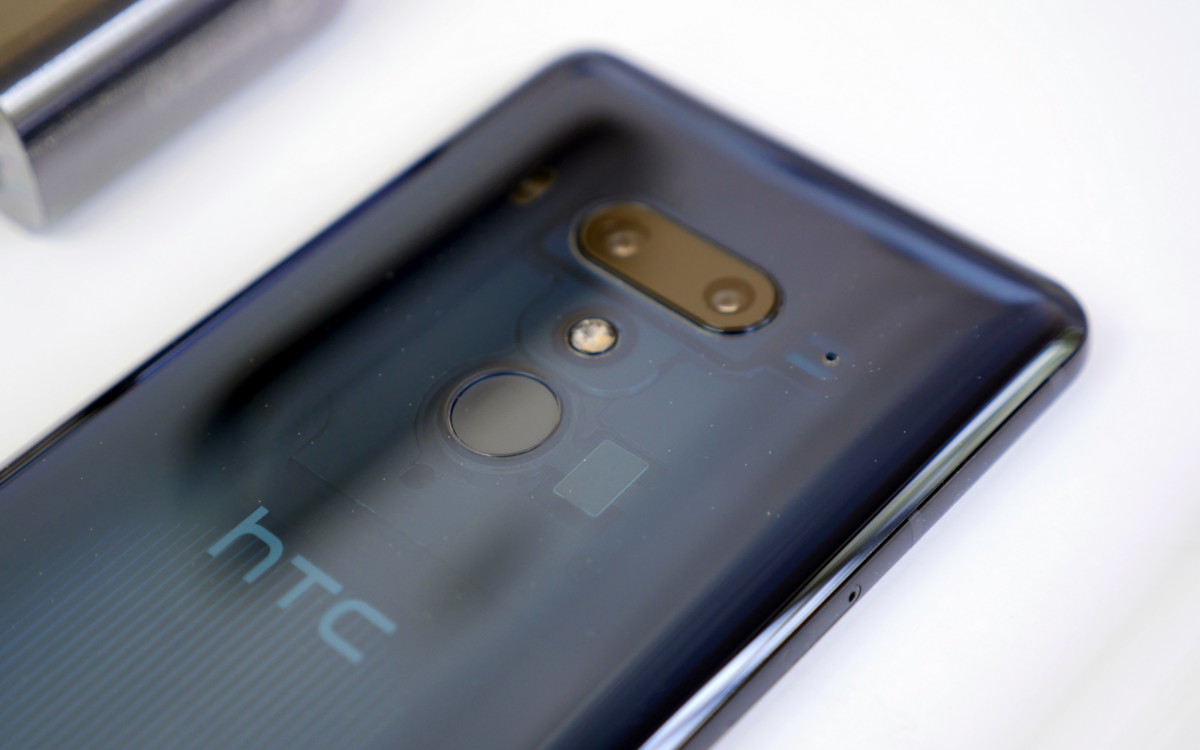
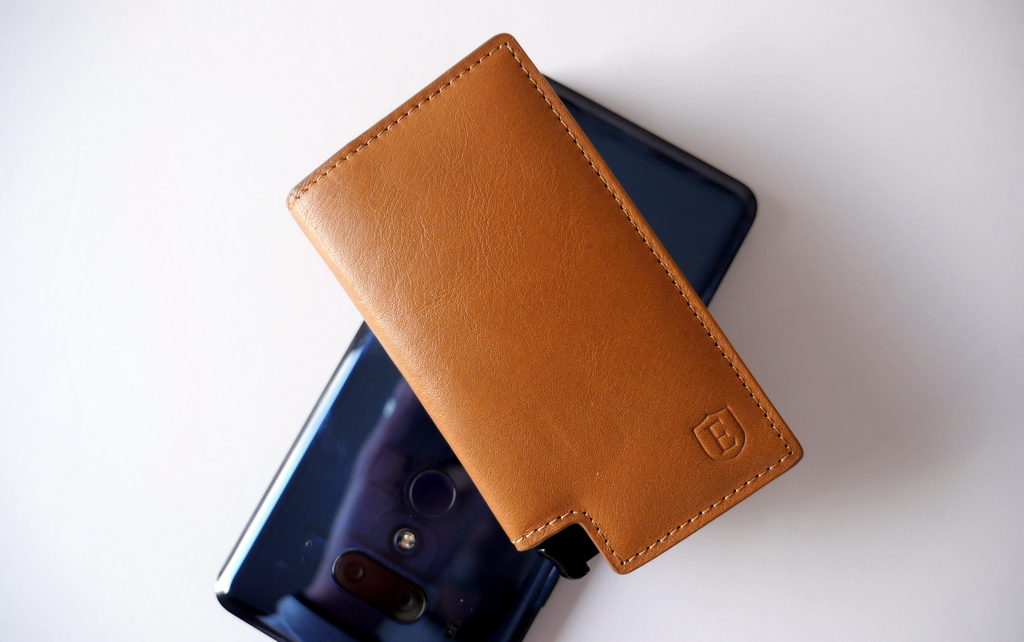

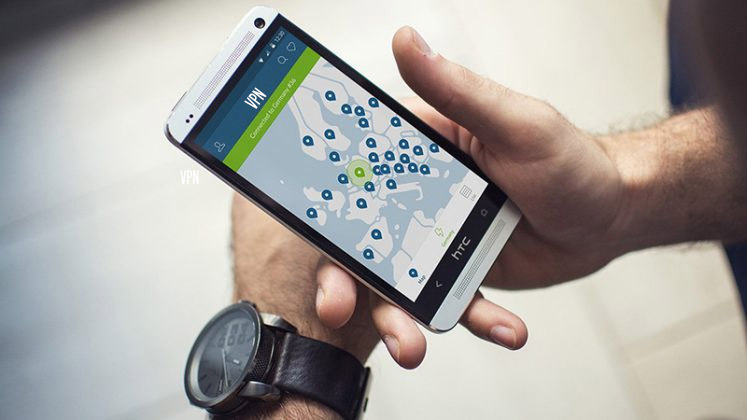


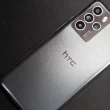

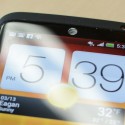
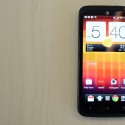
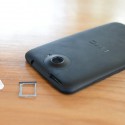
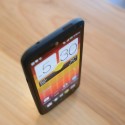

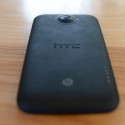

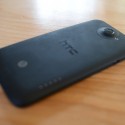
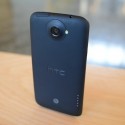














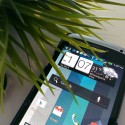
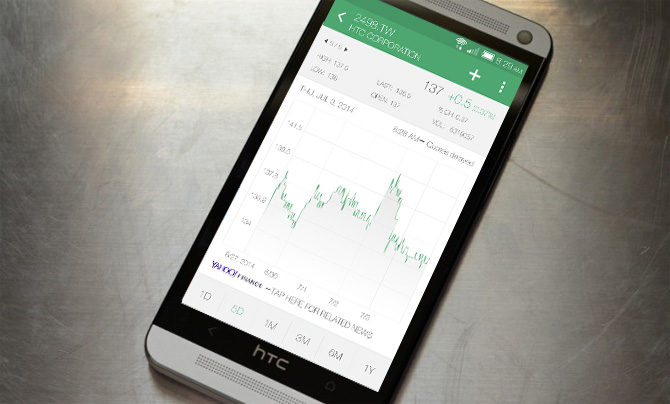

I’v to buy a htc phone…tottaly confused between htc one and htc one x+..
htc one x+ is much bttr it’s camera also good..and price is also low than ONE..but i knw htc one has great features.but it’s price is much higher than one X+.Wwhat about ONE’s camera is it better than one x+????..is the so called 4mp ultra pixel is better than 8mp ??? please suggest me